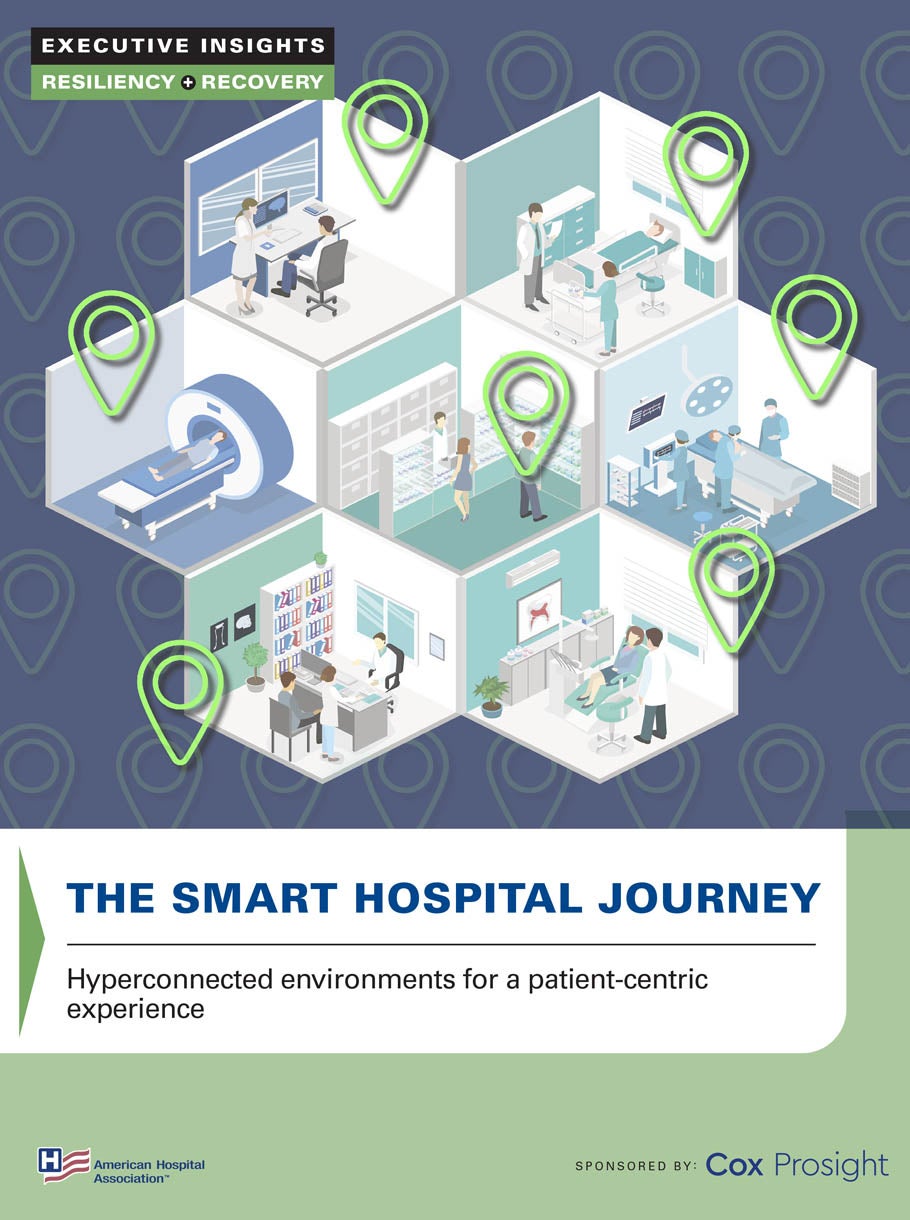
The Smart Hospital Journey
Executive Dialogue
Hyperconnected environments for a patient-centric experience
Embarking on the journey to becoming a smart hospital begins with exploring what kind of experience the health system wants to provide for patients and employees and in what ways the care journey might be transformed. Faced with significant challenges to operational efficiency, patient experience and staff safety, health care executives are looking for real-time visibility and instant notifications of important changes to enhance the patient experience, improve patient workflows and alleviate some of the burden on health care workers. This executive dialogue examines how health care organizations are using data generated by smart hospitals to inform and expedite decisions, deliver more personalized care, improve visibility into resource utilization and better manage fluctuating caseloads.
10 Strategies for a Smart Connected Hospital
- Create a better work environment and experience for the care team.
- Commit long term to upgrading and integrating siloed, legacy infrastructure systems— the electronic health record and enterprise resource planning system.
- Deliver value from digital systems by connecting and integrating technologies to reduce workflow complexity.
- Examine new technologies like artificial intelligence and machine learning to reduce documentation burden and improve personal contact with patients.
- Move to an automated environment in which data from smart devices integrate with smart systems to aggregate and generate insights to improve clinical outcomes.
- Develop bottom-up approaches that bring the front lines into the innovation circle to support the workforce.
- Employ electronic wayfinding to improve scheduling, throughput and the efficient use of resources.
- Learn from other industries on how to use and mine data to create better experiences, better engagement and better interaction.
- Optimize decentralized and patient-centric services beyond the hospital walls into the home, whether it’s hospital at home or telemedicine.
- Implement a real-time locating system (RTLS) to track and identify devices and optimize equipment use. Use RTLS with panic buttons in high-risk areas.
Participants

Ashley Capps, MSN, R.N., NEA-BC
Vice President of Operations and Chief Nursing Officer
Tidelands Health

Craig Doyle, MBA
Vice President and Chief Information Officer
St. Tammany Health System

Ivan Durbak
Chief Information Officer
BronxCare Health System

Paul Ehrlich, M.D., MHA
Chief Medical Informatics Officer
AtlantiCare

Thomas Marchlewski, MBA
Corporate Director, Technology and Infrastructure
AtlantiCare

Michael McKendall, MS, PharmD
Vice President of Operations
East Jefferson General Hospital

Kerry Milton, MSHA, R.N.
Senior Vice President/Chief Nursing Officer
St. Tammany Health System

Kat Rondeau, FACHE
Chief Strategy Officer, CommonSpirit Health Southwest Division
Dignity Health

Sharon Toups, FACHE
Senior Vice President and Chief Operating Officer
St. Tammany Health System

George Valentine, MBA
Assistant Vice President, Cox Communications
General Manager, Cox Prosight

Moderator:
Suzanna Hoppszallern
Senior Editor
American Hospital Association
AHA Executive Dialogue Series
Gain insights from the C-suite and health care leaders on the most pressing issues and transformational strategies.








